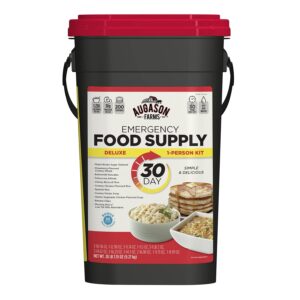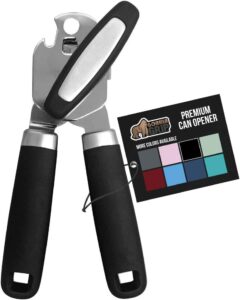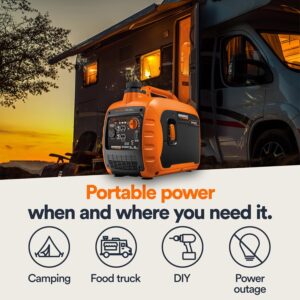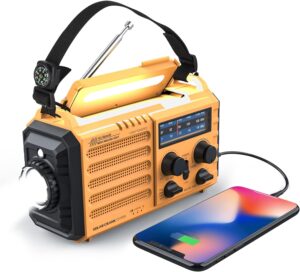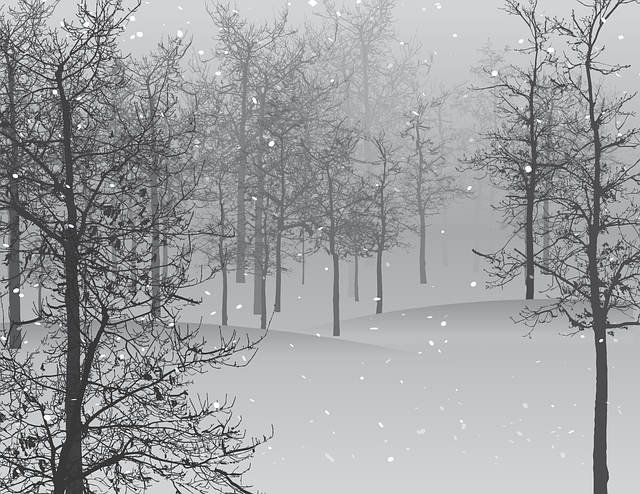
A Guide to Surviving Freezing Temperatures in the Event of a Power Outage
When the temperature drops and the power goes out, you’re suddenly faced with the challenge of staying warm and safe without modern conveniences.
This guide will show you how to prepare for and survive freezing temperatures during a power outage.
Whether you’re battling a winter storm or preparing for potential outages, these strategies will help keep you and your loved ones safe, warm, and resilient.
Understanding the Risks
The Impact of Power Outages in Cold Weather
Power outages in frigid temperatures present distinct obstacles, ranging from discomfort to life-threatening scenarios.
Inadequate heating can lead to hypothermia, frozen pipes, and other risks.
Preparing for such situations is critical to ensuring the safety and well-being of you and your family.
Preparing for Freezing Temperatures
What to Do Before a Power Outage
Stock Up on Essential Supplies
- Having the right supplies on hand before a power outage is critical. Here’s what you need to gather:
- Non-perishable food: Canned goods, dried fruits, nuts, protein bars, and other foods that don’t require refrigeration.
- Drinking water: Store enough for at least 3 days, with 1 gallon per person per day.
- Manual can opener: Without power, electric can openers won’t work.
- Warm clothing and blankets: Thermal clothing, wool socks, and heavy blankets can help retain body heat.
- Emergency lighting: Stock up on flashlights, lanterns, candles, and extra batteries to see in the dark.
2. Secure Alternative Heat Sources
During a power outage in freezing temperatures, finding a way to stay warm is crucial. Some safe options include:
- Propane heaters: These are portable and can safely heat a small space. Always ensure proper ventilation to avoid carbon monoxide buildup.
- Kerosene heaters: Also portable, these can heat rooms effectively but should be used with caution.
- Wood-burning stoves: If you have one, it’s an excellent backup heat source. Make sure your wood supply is dry and easily accessible.
- Insulated sleeping bags: Even without heaters, these can keep you warm in extreme cold.
3. Insulate Your Home
Taking steps to conserve heat before an outage can make a big difference when the temperature drops. Focus on:
- Sealing drafts: Use weather stripping or towels to block cold air from seeping in under doors or through windows.
- Insulating windows: Hang heavy curtains or even blankets over windows to trap heat.
- Closing off unused rooms: Concentrate your heat in one area by keeping the doors to unused rooms closed.
4. Prepare an Emergency Kit
Create an emergency kit with these essentials:
- First aid supplies: Bandages, antiseptic, pain relievers, and any prescription medications you might nee
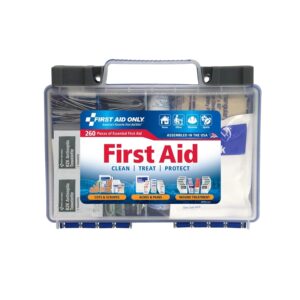
- Important documents: Keep copies of IDs, insurance papers, and other crucial documents in a waterproof and fireproof safe.
- Power banks: Pre-charge them so you can keep your devices running during an outage.
During the Outage
Staying Warm Without Power
Once the power goes out, your main priority is to stay warm and safe. Here’s how to make the most of what you have.
1. Layer Up for Maximum Warmth
When there’s no heat, dressing in layers is one of the best ways to stay warm:
- Start with a moisture-wicking base layer to keep sweat away from your body.
- Add a mid-layer of insulation (fleece or wool).
- Top it off with a windproof and waterproof outer layer.
- Don’t forget a hat, gloves, and wool socks. Most body heat is lost through your extremities.
2. Maximize Heat Retention in Your Home
To keep as much warmth in your living space as possible:
- Keep doors and windows closed: Avoid letting in cold air.
- Block drafts: Use blankets, towels, or even rolled-up clothes to seal gaps around doors and windows.
- Stay in one room: Concentrate your body heat by gathering everyone in a small, well-insulated room. You can even use a tent or fortify a small space with blankets for extra insulation.
- Huddle together: Body heat is a valuable resource. The more people and pets in one space, the warmer you’ll be.
3. Safe Cooking & Heating Options
If you need to cook or create warmth:
- Camping stoves: These are portable and can be used outside to boil water or cook small meals.
- Grills: Only use grills outdoors to avoid carbon monoxide poisoning.
- Portable heaters: Ensure that any portable heaters you use are designed for indoor use and follow all safety instructions.
4. Avoid Dangerous Practices
Some common attempts to stay warm can be deadly. Be sure to avoid:
- Running a generator indoors: Always keep generators outside and at least 20 feet from windows and doors.
- Using charcoal grills indoors: Grills produce harmful carbon monoxide and should only be used outdoors.
- Open flames without supervision: While candles can provide light and some warmth, never leave them unattended.
Power Outage Survival
Tips for Families and Pets
Freezing temperatures and power outages can be particularly challenging for families with children and pets. Here’s how to ensure their safety.
1. Keeping Children Safe and Comfortable
Children are more vulnerable to cold, so take extra precautions to keep them warm:
- Dress them in layers: Ensure that children are wearing proper thermal clothing, hats, and gloves.
- Keep them entertained: Boredom can lead to frustration during a prolonged outage. Stock up on board games, puzzles, or simple crafts to pass the time.
- Designate a safe, warm space: Create a cozy area with lots of blankets and pillows where they can rest.
2. Pet Protection
Pets are also susceptible to the cold, so make sure they stay warm:
- Bring pets indoors: Never leave pets outside during freezing temperatures.
- Create an insulated space: Give your pet extra blankets, and if possible, let them stay in the same room as the family.
- Ensure access to food and water: Make sure your pets have access to fresh food and water, which can freeze if left unattended.
3. Communication and Entertainment
Staying connected is crucial, even if the power is out. Here are some tips:
- Keep phones charged: Use power banks and solar chargers to keep phones and devices operational for communication.
- Battery-operated radios: Have a battery-operated, solar radio to stay informed about weather updates and emergency announcements.
- Books and games: Keep everyone’s spirits up with activities that don’t require power, like reading or playing card games.
Post-Outage:
Recovering After Freezing Temperatures and Power Loss
Once the power comes back on, there are still important steps to take to ensure your home and family are safe.
1. Inspect Your Home for Damage
Frozen pipes and other damage are common after freezing temperatures:
- Check for burst pipes: If you suspect a frozen pipe, thaw it slowly to prevent bursting. If a pipe has already burst, shut off the water supply and call a plumber.
- Inspect your heating system: Make sure your furnace and any other heating systems are functioning properly.
- Look for electrical issues: Power surges can cause damage to appliances, so check each one carefully.
2. Restock Emergency Supplies
Use the post-outage period as an opportunity to restock:
- Replace used supplies: Replenish food, water, and any other items you used during the outage.
- Reevaluate your emergency kit: Consider adding any items you wished you had during the outage.
3. Reflect and Improve Your Preparedness
After an outage, take time to reflect on your experience:
- What worked? Did your preparations meet your family’s needs?
- What can be improved? Identify any gaps in your emergency plan and take steps to address them.
Long-Term Power Outages
Additional Considerations
When a power outage extends beyond a few hours, survival requires more than just staying warm. Here are additional things to consider for the long haul.
1. Food and Water Safety
If the outage lasts more than a day, food and water safety become concerns:
- Keep food cold: If your refrigerator isn’t working, use coolers packed with snow or ice to keep perishables cold. However, avoid storing food outside unless it’s below 32°F and secure from animals.
- Use food in order: Start by eating perishable foods first before moving to your non-perishable stockpile.
- Boil water if needed: If your water source is compromised, boil water on a camping stove before drinking.
2. Staying Informed
Long-term outages require keeping up with local information:
- Solar radios: These are essential for receiving news about weather conditions and power restoration efforts.
- Check on neighbors: Especially if you live in a community with elderly or vulnerable individuals, offering help can be lifesaving.
3. Mental and Emotional Well-Being
Extended outages can take a toll on mental health. Keep spirits up by:
- Staying busy: Use downtime to engage in activities like reading, journaling, or playing games.
- Communicating with loved ones: Talking to friends and family (even if briefly) can relieve anxiety.
- Practicing mindfulness: Techniques like deep breathing or meditation can help alleviate stress.
4. Community Resources
In extreme conditions, knowing where to find help is vital:
- Local shelters and heating centers: Know where your nearest shelter or warming center is located.
- Emergency services: Have contact information for local emergency services and be ready to call if necessary.
Conclusion
Power outages during freezing temperatures are challenging, but with the right preparation and knowledge, you can stay safe and warm.
Start preparing today by gathering supplies, securing alternative heat sources, and making your home as energy-efficient as possible.
The key to surviving winter outages is planning ahead and staying calm during the event. Take these steps now, and you’ll be ready to face whatever winter brings.
